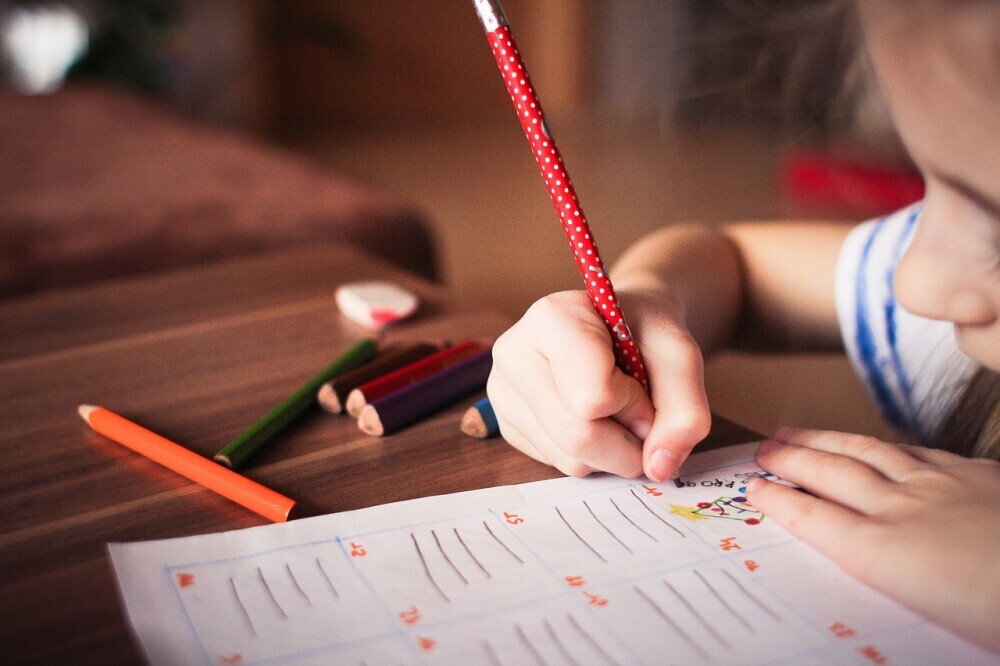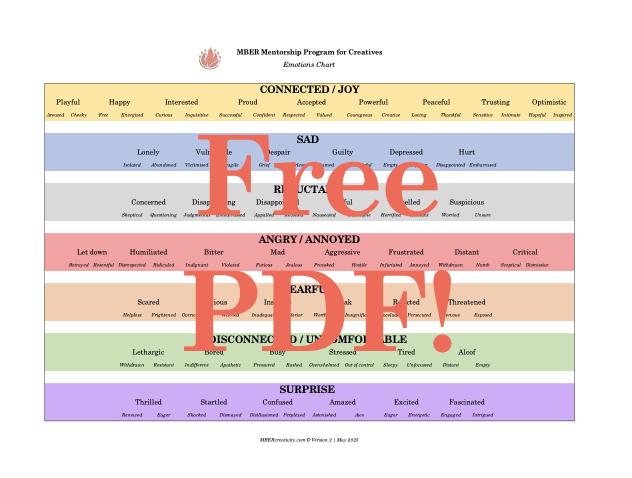
Raising kids who thrive emotionally and creatively in today’s world feels like a big task sometimes. Emotions are running high, social pressures are everywhere, and new tech pops up faster than most of us can keep up. I hear from so many parents who want to nurture their child’s emotional smarts and creative spark, but feel unsure of where to start or how to fit it all into busy days.
I’m here to make it a bit easier. The right combination of everyday routines, simple communication, and carefully chosen tools, especially those inspired by the Mastering Balanced Expression & Resilience (MBER) approach, goes a long way at home. You don’t need an endless supply of gadgets or memberships; just a handful of thoughtful, proven resources can help your child thrive both emotionally and creatively.
This practical guide walks you through five top tools, each with a real-world purpose for building emotional resilience, self-expression, and confident creativity. Along the way, I’ll explain the key MBER concepts and suggest high-quality products worth checking out, especially if you’re considering a special gift or mindful parenting investment.
Why Emotional Intelligence and Creative Confidence Matter
Emotional intelligence (sometimes called EQ) is all about understanding, expressing, and managing emotions, both your own and those of others. Creative confidence, meanwhile, is the ability to trust yourself to try new ideas, express your thoughts, and find joy in making or exploring something new.
Kids do better at school, handle life’s ups and downs more smoothly, and forge stronger friendships when their emotional smarts and creative strengths are encouraged. This not only prepares them for academic success; it gives them tools for handling tough times, big feelings, and ever-changing social situations. Honestly, it also makes home life a lot more harmonious and enjoyable. When children feel understood, safe to express themselves, and given permission to experiment creatively, their sense of self grows. They bounce back from setbacks, communicate their needs, and develop perseverance in the face of challenges.
The world outside our door—at school, in social spaces, or online—can feel like a rollercoaster. Emotional intelligence helps kids spot subtle social cues, manage peer pressure, and set boundaries with confidence. Creative confidence lets them solve problems, try new ways of thinking, and stand strong in who they are (and who they’re still becoming).
1. Screen Free Audio Players: Building Storytelling and Emotional Literacy
Every parent I know has had a moment where they wished for more screen-free ways to engage their kids, especially during downtime or while settling in for the night. This is where kid-friendly audio players like the Yoto Player or Toniebox come in handy. These clever gadgets let children listen to stories, music, and even mindfulness tracks at the press of a button, with no scrolling, notifications, or autoplay rabbit holes to worry about.
Listening to stories boosts emotional vocabulary, nurtures empathy, and helps kids identify complex feelings in themselves and others.
Music, especially calm or uplifting tracks, can help with emotional regulation, whether it’s winding down after a wild playdate or gearing up for a challenging day.
More ways to research how music helps:
- Journal of Music Therapy (Oxford Academic)
- Explore studies on how music impacts emotional development, self-regulation, and behavior in children.
- https://academic.oup.com/jmt
- “The Neurosciences and Music” Series – Annals of the New York Academy of Sciences
- These peer-reviewed volumes cover neuroscience findings about music and emotion.
- Especially look for volumes like “Music, Sound, and Health.”
- https://nyaspubs.onlinelibrary.wiley.com/
How to Use It at Home
- Swap in audio stories during car rides or quiet time before bed, creating calming rituals and screen-free alternatives.
- Themed playlists (gratitude, bravery, or even silliness) support whatever mood you want to encourage or celebrate.
- Guided mindfulness tracks (sometimes included or available to download) encourage breathwork, gentle body scans, or gratitude reflections. They feel fun and relaxing instead of just another lesson or to-do item.
Product Tie-In: Yoto Player & Toniebox
Both of these audio devices hit that sweet spot between tech and tradition. Kids as young as three can choose their own stories, giving them a sense of control and pride. They’re wireless, durable, and parents can choose tracks that align with emotional literacy or mindfulness values.
- Price Range: $100–$150
- Worth checking out for: Independent listening, emotional vocabulary, calming routines
With a simple interface, even young children feel empowered to make their own listening choices. These players also adapt as your kids grow; older kids might use them for language learning, sleep meditations, or even creative podcasts that spark new interests.
2. Weighted Blankets: Comfort and Calming for Strong Emotions
When big feelings hit—anger, worry, excitement, or even exhaustion—kids often need a safe, physical way to ground themselves. Weighted blankets have gained popularity for supporting kids with sensory sensitivity or neurodivergence, but honestly, most children (and plenty of adults) find the gentle pressure deeply comforting during tough moments (and I can attest to the brilliance of these blankets, because even adults, including myself, feel comforted with weighted blankets).
Weighted blankets work by offering deep pressure stimulation, which research shows can help calm the nervous system. Many families use them as transitional tools: moving from busy afternoons to quieter evenings, coping with school stress, or even just making bedtime cozier and more peaceful.
The sensation of gentle pressure can be especially helpful after a meltdown, a noisy event, or if your child is feeling overwhelmed in new environments.
Why It Works
- Weighted blankets are a tangible, accessible take on grounding techniques, helping kids return to the present when big emotions get overwhelming.
- Combining the blanket with simple breathing or self-talk skills multiplies the effect: “I feel the cozy pressure, I notice my breath, I know I’m safe right now.”
Small children often like having a “comfort station”—a spot in their room with their weighted blanket, maybe a favorite stuffed animal or calming object, and a few picture books or headphones for mellow tunes. This safe space can encourage self-regulation before things get overwhelming.
How to Choose the Right Weighted Blanket
- Check the suggested weight (usually about 10% of your child’s weight for safety and comfort).
- Look for options with removable, washable covers for easy cleanups and durability (this is important!)
- Some styles offer fun patterns or soothing textures—worth hunting for one your child is excited to use.
Product Tie-In: Weighted Blankets for Kids
Brands like Harkla and ZonLi offer well-reviewed models. Expect the $40–$80 range for a good, long-lasting blanket.
- Worth checking out for: Calming after stressful events, bedtime routines, emotional self-regulation
Weighted blankets are not just for sleep or relaxation; you can use them while reading, listening to audio stories, or even for a few minutes of quiet break during a hectic day. The simple act of wrapping up can do wonders for easing anxiety or big feelings.
3. Digital Drawing Tablets: Freeform Creative Expression for Every Skill Level
Giving kids tools for open-ended art is a direct way to boost creative confidence. Crayons, paints, and stickers have always had a spot at our table, but digital drawing tablets open up whole new worlds. There’s no worrying about running out of paper, making a mess, and mistakes are just another swipe away from a fresh start.
Easy-to-use tablets like the Wacom One or XPPen are surprisingly kid-friendly and come with all sorts of free painting, doodling, and design apps. Children of all ages can experiment, play, and share their art without the pressure that sometimes comes with structured lessons. The ability to draw, undo, remix, and layer makes digital art especially freeing for perfectionists, reluctant creators, or kids who just like to tinker.
How Digital Art Fosters Emotional and Creative Growth
- Art
- helps children process big thoughts, from worries to joys to wild ideas.
- Digital art
- allows for experimenting fearlessly, where “messing up” isn’t a big deal. This grows self-trust and resilience through creative play.
- Collaboration
- Collaborative projects (drawing a family comic, inventing new characters) spark conversations about feelings and relationships in a playful, low-pressure way.
Product Tie-In: Wacom One and XPPen Drawing Tablets
- Both brands make durable, responsive models in the $200–$400 range.
- Check that your device works seamlessly with your family’s computer or tablet. Some models are plug-and-play, others need specific apps or software to get started.
At-Home Ideas for Parents
- Schedule “open studio” time—a few evenings a week, everyone draws or doodles together, no outcome needed.
- Ask your child to draw their feelings or make storyboards about recent experiences (“What did your morning at school look like in your mind?”).
- Share and celebrate creations, but avoid the temptation to “fix” or direct their process. Open-ended, imperfect results are the point!
Art time is also a gentle way to open up dialogs about bigger feelings. You could try group prompts (“Let’s each draw what makes us feel safe” or “Design an imaginary creature that helps you on a tough day”) to connect as a family while empowering self-expression.
4. Mindfulness Curriculum Kits and ParentChild Journals: Building Everyday Reflection and Skills
Kids are more likely to use emotional regulation skills when they’ve practiced in low-stress moments, not just during meltdowns. Mindfulness kits and guided journals give families language and structure for exploring emotions and reflecting on the day’s ups and downs together. These can work for a huge range of ages, from preschool to the teenage years, by picking prompts suited to your child’s developmental stage.
These tools often include card decks, thought-provoking prompts, collaborative activities, and simple self-care checklists.
Guided journals especially help kids name their feelings, spot patterns in their moods, and set gentle, achievable goals for handling big reactions next time.
Even just a few lines a day (“Today I felt proud when…”, or “Something I want to try tomorrow is…”) can build lifelong habits of self-reflection and resilience.
Why Structured Reflection Makes a Difference
- Prompts and guided questions
- encourage honest, open conversation without making things heavy or overwhelming. They become a springboard for deeper talk when the time is right.
- You get to see what’s actually on your child’s mind.
- Sometimes they’ll surprise you with insights, ideas, or tiny worries you never expected.
- Regular use builds a foundation
- for tackling harder moments down the road, whether at home, in school, or with friends. Journaling helps kids track progress and rediscover their own strategies when tough emotions come up again.
My Favorite Curriculums and Journals
- Mindful Monsters Therapeutic Workbook (fun cards and posters for kids 5–10)
- Gratitude Journal for Kids (guided prompts for ages 3-5)
- The Mindful Dragon (gentle, story-based mindfulness book for young children)
- Price Range: $10–$20
Added bonus: These kits and journals make wonderful gifts for birthdays or holidays, helping families create rituals that last far beyond the first week of excitement. If you want to create your own, you might collect inspiring quote cards, favorite photos, or simple printable feelings charts and keep them in a box your child decorates. The point is to make reflection as natural and inviting as play.
5. Home Music Studio Kits: Empowering Musical Discovery and Emotional Release
Music is an underrated superpower when it comes to both emotional regulation and creative growth. Setting up a basic home studio (think simple MIDI keyboard, starter microphone, and headphones, not professional-level equipment!) is easier and more affordable than you might guess, and it gives your child a completely new outlet to explore.
Through songwriting, improv, or just plain noise making, music lets kids access tricky feelings, celebrate successes, or process disappointments.
It’s not about formal training (although this can help!); it’s about freedom to:
- try
- play
- experiment
- share
Making music together is a great bonding activity that lets parents model emotional openness and creative risk-taking.
How Music Making Supports Emotional Intelligence
- Improvising or creating music builds self-awareness (“What sound feels like my mood right now?”)
- Songwriting puts language to experiences in a format that feels fun and safe.
- Collaborating on music fosters social-emotional skills: listening, compromise, and group celebration.
Starter Studio Gear
- M-Audio Keystation 49 MK3 ($125)
- FIFINE USB Mic for Recording ($30)
- Audio-Technica ATH-M40X Headphones ($99)
The total starter cost of an adequate home studio is usually $200–$400 (not counting the computer). If you have a working computer

Add a free program (like Audacity) or trial versions of music production apps like GarageBand or Cakewalk, and your child (or family) is set for musical discovery. You don’t need any music theory background to get started; just have fun experimenting!
Worth considering music equipment for:
- practicing emotional expression
- family bonding/activity
- open-ended creative play
You don’t have to invest in expensive gear. Even simple instruments—like a ukulele, djembe, or found objects for percussion—can give your child the joy of music making. Try family listening nights where everyone picks a song that fits their day, then talk about what it means to them. This kind of open sharing is what builds musical confidence and emotional resilience at any age.
Tips for Integrating These Tools into Daily Life
Even the best tools work better with small switches in daily routines and mindsets. Here are a few things I keep in mind:
- Mix and match; combine several tools based on your child’s style and age. Some kids love to draw but aren’t interested in music (or vice versa!).
- Keep things visible and accessible; store journals, audio cards, or drawing tablets where kids can reach for them on their own to encourage independence.
- Model emotional openness; share your own creative projects, talk about your big feelings, and don’t be afraid of a little messiness.
- Celebrate small wins; notice and name progress with regulation and creative risks (“I saw how you used your blanket and took a breath when you felt worried. Awesome self-care!”).
- Make rituals out of reflection; for example, a mindful minute before bedtime, or a quick creativity circle on weekends where everyone shares something they’ve made or felt proud of during the week.
The most important thing is to keep it playful and pressure-free. Even a few minutes a day, done consistently, can make a big impact on your child’s confidence and emotional well-being.
Why the MBER Mentorship Program Can Help You Go Even Further
These tools are a great start, but sometimes families need a bit more, like structured, ongoing guidance for handling tough transitions or big changes. That’s where a program based on the MBER methodology shines.
The MBER Mentorship Program helps parents grow their confidence in modeling emotional regulation, teaching creative routines, and responding calmly to their child’s challenges. You’ll get scripts for talking about hard topics, live feedback from experts, and a community of like-minded parents for encouragement and ideas. For parents looking for hands-on support, it’s worth checking out.
Full MBER Course available on Udemy!

Unlock your creative child’s full potential by learning how emotional balance directly fuels creativity through this course about strengthening emotional intelligence.
INCLUDES:
- Full course available as a downloadable audiobook (MP3) & eBook (PDF)
- 10 downloadable PDFs, including full course text, charts, research, inspirational quotes & more
- 4 quizzes to test your comprehension of the material
- Multiple activities to encourage interaction with the course (including a drawing challenge)
In this powerful and practical MBER course, you’ll discover why emotional intelligence is not just helpful in parenting—but essential—for raising creative, confident, and resilient children.
This course is helpful for those searching Udemy for:
- “How to motivate a creative child”
- “Helping kids with emotional sensitivity”
- “Supporting highly sensitive child with their creativity”
** Whether your child is an artist, dreamer, problem-solver, or bursting with big ideas, this course will equip you to support their imagination while building the emotional strength they need to thrive. **
Parenting for creativity and emotional intelligence is not the easiest due to its inherent conceptual nature. But.If you’re a parent, caregiver, or mentor who wants to learn how to nurture creativity with more confidence—this course is for you.
Not ready for a full course? The MBER team also offers free downloads like an emotion chart and much more to come.
Free resources like MNBER’s emotion chart can add new ideas to your routines without making things complicated or overwhelming.
Creating a Home Full of Emotional and Creative Possibility
Every family’s adventure is unique. The tools I’ve shared above are just starting points; you can always add, adapt, or simplify as your needs change. What’s really important is that you show up, make space for mess and feelings, and let your child see that emotional growth and creative confidence are everyday priorities at home.
Got questions or want to share what’s working for your family?
I’d love to hear your stories and tips. Reach out, explore the resources, and keep cheering for your child’s inner world, one mindful, creative day at a time.














This was such a thoughtful and practical post—emotional intelligence and creativity are two of the most powerful gifts we can nurture in our kids. I really appreciated how you combined both in your approach, rather than treating them as separate skills.
As a parent, I’ve seen firsthand how tools like emotion charts and open-ended art supplies can completely shift a child’s ability to express themselves. One of our favorite routines is sharing a “color of the day” to describe how we feel—it opens up conversations in such a simple but meaningful way.
In my opinion, these early efforts at home are even more important than what’s taught in schools. When kids feel emotionally safe and creatively encouraged, everything else starts to fall into place—confidence, communication, and even learning.
Thanks for putting together such a useful resource—it’s a great reminder of the influence we have in shaping not just smart kids, but emotionally strong and imaginative ones too.
That is wonderfully put: “…powerful gifts we can nurture in our kids.” I definitely agree that it is probably some of the most important and loving things we can do for the next generations. Your activity of sharing a “color of the day” is a beautiful practice, too! Thank you for sharing. I’m so glad you appreciated the post and found it thoughtful.
There are so many ways to develop emotional intelligence, but sometimes we are stumped at what we should be doing, so this post has come in very handy. I was surprised that it can be as simple as reading stories to your children.
I have always enjoyed a weighted blanket, but had no idea that they were beneficial for EI. This is also a simple thing to implement.
Music making is a great thing to do for many reasons, and I am glad that this section was in the article. Kids love musical instruments, and I am not sure if it is because they can make a noise or there is something else underlying?
Hi Michel, thanks for your reply – yes, there so much underlying the act of making music for children. Not only does it use a lot of the brain (both sides!), it is also an opportunity for social interaction and developing a good relationship with failure. Best of luck with your own adventures with emotional intelligence!
It’s fascinating how much of a difference emotional intelligence can make in a child’s ability to handle challenges creatively. I’ve found that simply allowing space for emotional expression, like through storytelling or open-ended drawing—often reveals insights into how kids interpret their world. I’m curious, do you think parents sometimes confuse emotional coaching with overvalidating every emotion? How would you suggest maintaining a balance between fostering confidence and encouraging resilience?
Great questions. Topics like these keep psychologists busy! Since there’s no perfect answer, but I can share my opinion – because overvalidating is a good worry to have, since it can happen so easily. Relying on your awareness of an authentic emotion can help filter out the unproductive ones, though it is inherently quite subjective to “weed out” not-so-productive emotions. Ask questions as you observe: Are they honest in their emotion? Does it come from a place of ego? What is the intent behind their emotions? All these and more can help shed light on whether or not validating their emotions further is helpful or a hindrance in moving through emotions ups and downs. Great questions, though, and it is definitely one worth thinking over! Appreciate your response.